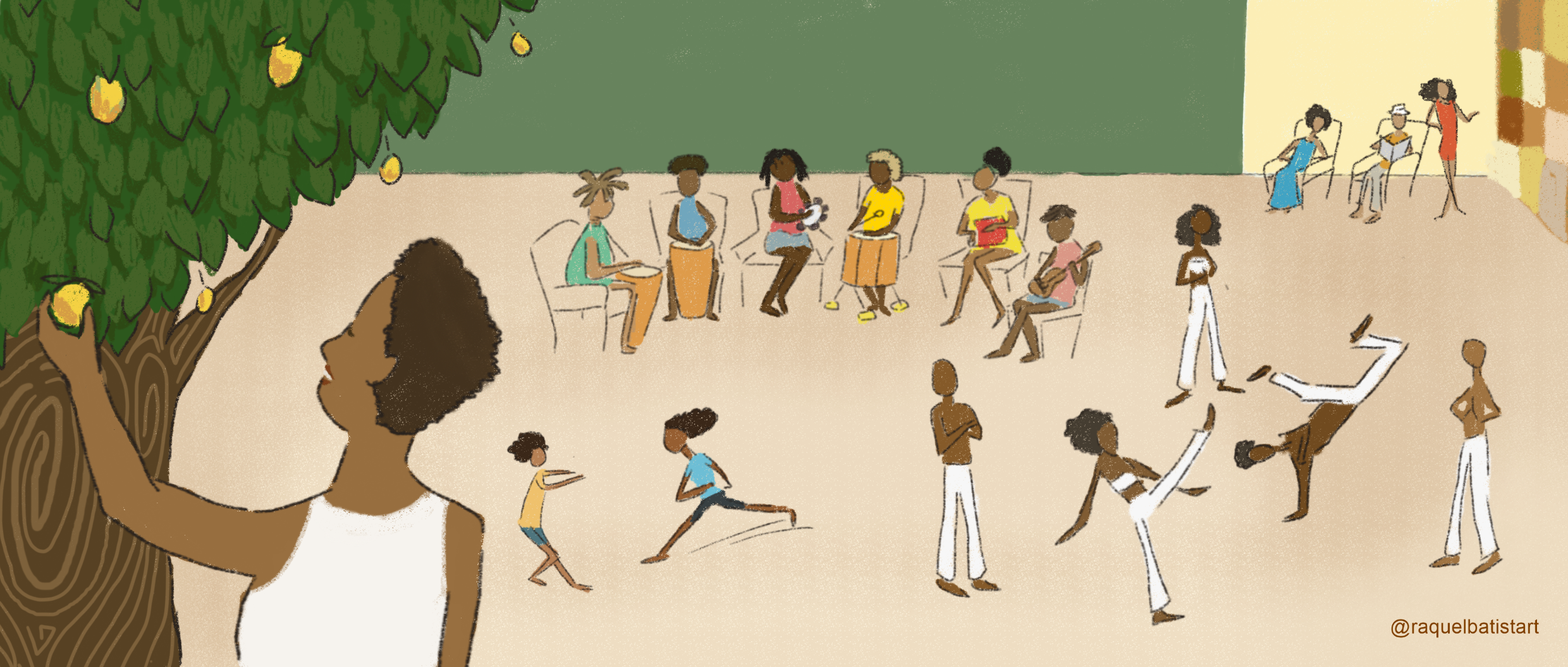
As they settled Brazil, Portuguese colonizers destroyed Black people’s lives in many ways, among them cultural destruction, stripping away beliefs, values, customs, and rhythms. When they didn’t kill, they were whitening and distorting [our culture]. To this day we’re left in doubt about who we are, why we are, where we came from, and where we are going. When he became aware of this, Breno Batista, 24, a resident of Rio de Janeiro’s West Zone, felt the need to establish the Fruit from the Tree Black Culture Center (Centro de Cultura Negra Fruta do Pé) focused on the cultural element he cultivates daily: samba. His house was always bustling. Samba came into his life through his family. In particular, his godfather Marcelo, who listened to a lot of samba and played the cavaco [string instrument central to samba].
“I was very young and would already pretend to play. I remember him having three DVDs that he would watch a lot: Jorge Aragão – From Night to Day, Fundo do Quintal – Live at Olympus, and Arlindo Cruz – Arlindo’s Pagode. On my eighth or ninth birthday, I was given a sum of money from my family and my godfather took me to go and buy an instrument. I arrived at the shop not knowing what to buy. I chose the instrument that I’d seen on the Fundo do Quintal DVD, the tan-tan [a Brazilian hand drum], the instrument that the leader of the group, Sereno, played.” — Breno Batista
Batista learned to play instruments with his cousins, aunts, uncles and friends, and by watching video tutorials on YouTube. It was always for fun, with the family. The first time he was paid was at a family member’s birthday party. At that time, he also began to watch documentaries about samba and the Black community. From then onwards, he had the idea to create a project for the revival of Black culture through samba.
“I thought about the history of how samba was created in Rio de Janeiro, [about how] organizations were formed by people with the same ideas coming together. I needed to create this kind of gathering in some way.” — Breno Batista
The samba circle started between the end of 2016 and beginning of 2017. The first edition took place on the promenade in Campo Grande on Rua Barcelos Domingos. The event was initially called Samba da Antiga (Old School Samba). Batista and his family were not expecting such a big gathering, but lots of people came, including several older sambistas [samba musicians] whom he admired. In 2019, they brought the circle to his backyard, which is currently the headquarters of Fruit from the Tree Black Culture Center, at Avenida Cesário de Melo 6300, in the neighborhood of Inhoaíba.
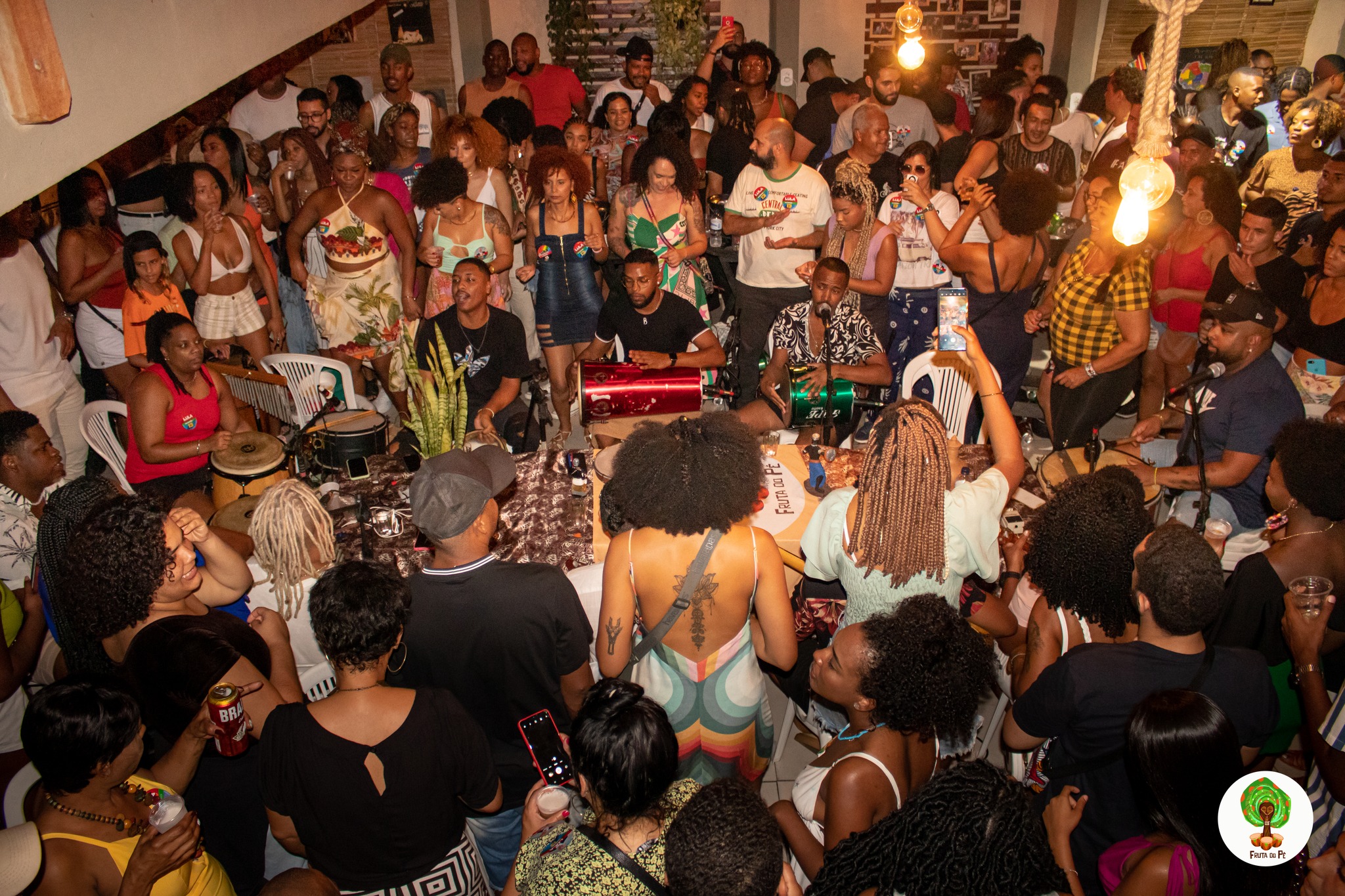
The Samba Quilombo Activities
The Fruit from the Tree Samba Samba Circle happens every third Saturday of the month. The majority of the crowd is Afro-Brazilian, appropriate given the purpose of the Black Culture Center. Each edition has a different guest or theme. They have already hosted famous composers and samba musicians, like Cleber Augusto, Marquinho PQD, Zé Roberto, Zé Luiz do Império, Ph Mocidade, Áurea Martins, Andréia Caffé, Zeca do Trombone, Marcelinho Moreira, and Jorge Nei, to name a few. The Samba Circle’s opening act are the “fruit’s seeds,” a group made up of students and musicians trained at the Fruit from the Tree.
In addition, the Center offers lessons in percussion, samba dancing, and capoeira. Every fortnight, the Black Reflections Discussion Group brings together Afro-Brazilians interested in going deeper into the search for cultural, political, and economic autonomy. When introducing themselves and talking about why they are in the circle, those present all have similar responses: “acceptance, belonging, quilombo, identification, revival.” According to participants, it’s a safe space where they can drop all the armor that racism forces us to wear and carry every day.
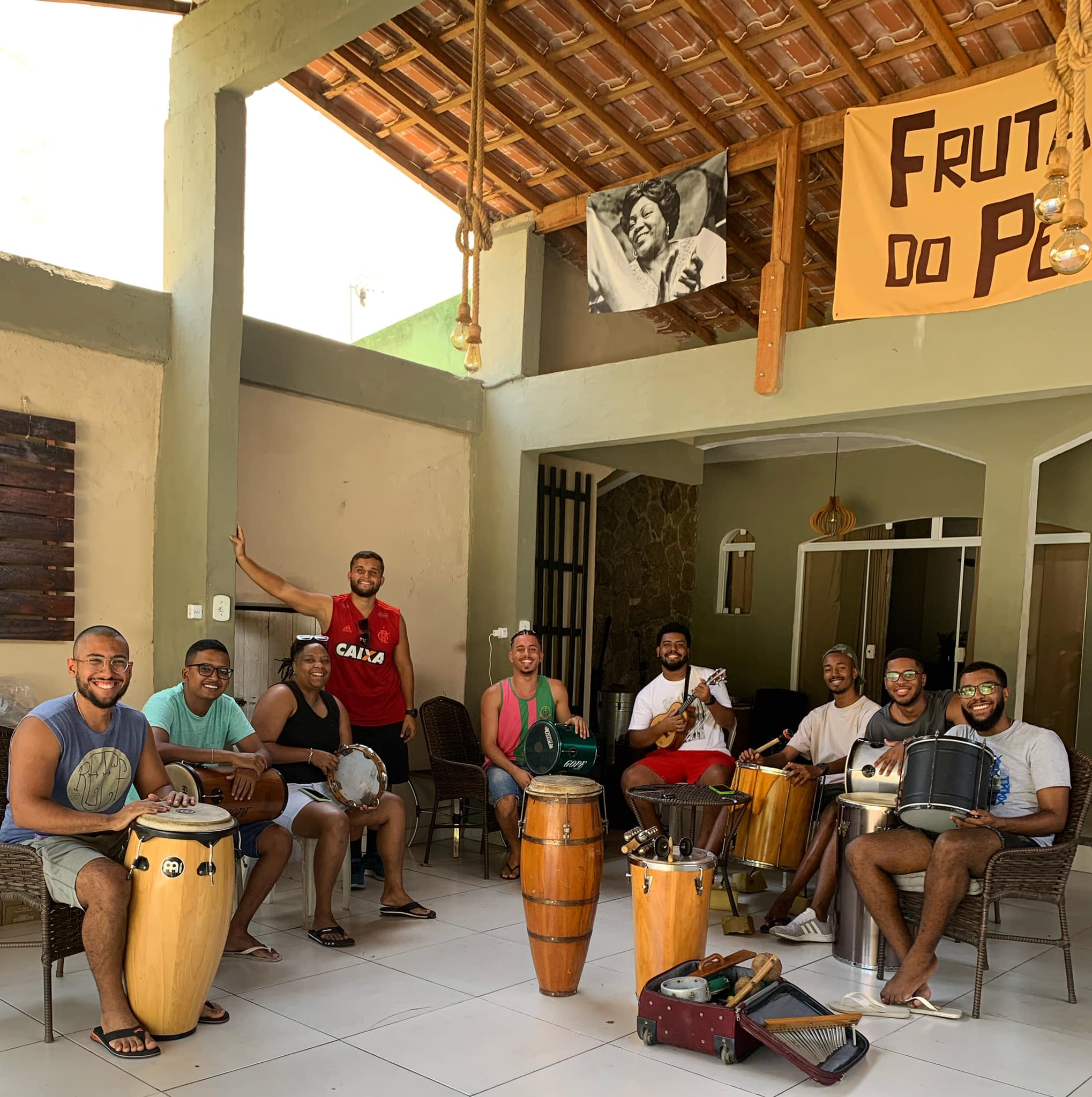
They have hosted other activities too including: Abayomi doll making workshops; a Sankofa Mhuri dinner, a cooking style inspired by a variety of African traditions; the Samba Cinema Club, a film screening of the documentaries Tempo Ê (Ê Time), which describes the story of the composer Zé Luiz do Império, and Samba do Trem (Train Samba), a journey on Rio’s historic samba train with memorable encounters; and actions in public schools in the region.
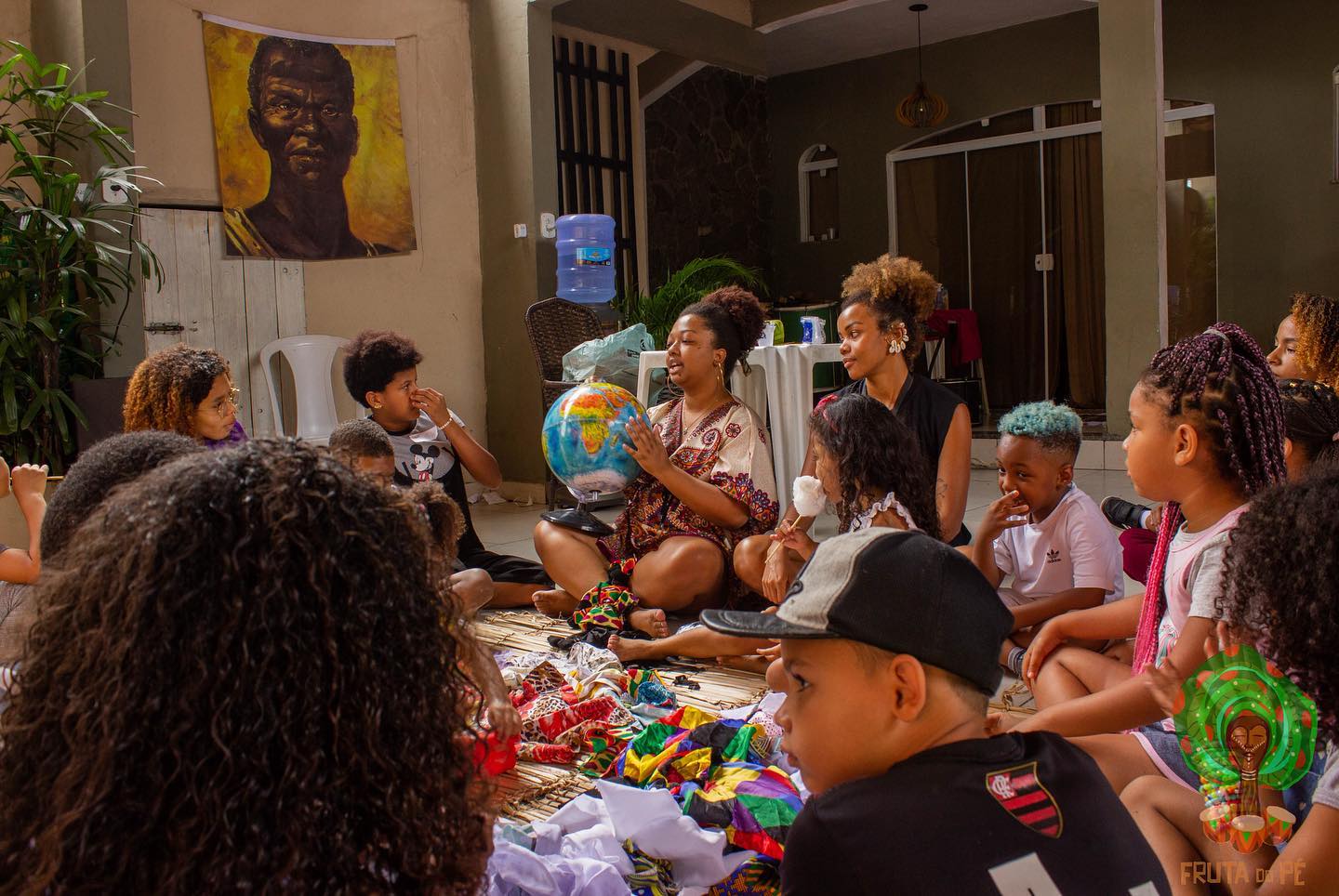
Raquel Batista is a visual artist, cultural producer, illustrator, and photographer and Breno Batista’s cousin. She was raised in Campo Grande and works with Fruit from the Tree running several activities. She says:
“The activity which I most enjoyed being part of was a presentation we did about African Womanism. It was a beautiful and intimate gathering. We spoke about women’s role from an African perspective and paid homage to the women in our family. Afterwards, a teacher who’d attended that day asked us to talk about it at the school where she works. I prepared a lesson designed for children. I explained the matriarchy to ten-year-olds and they responded very positively. This exchange was very cool! Mainly because I went more in depth into the topic [to be able to teach the little ones].”
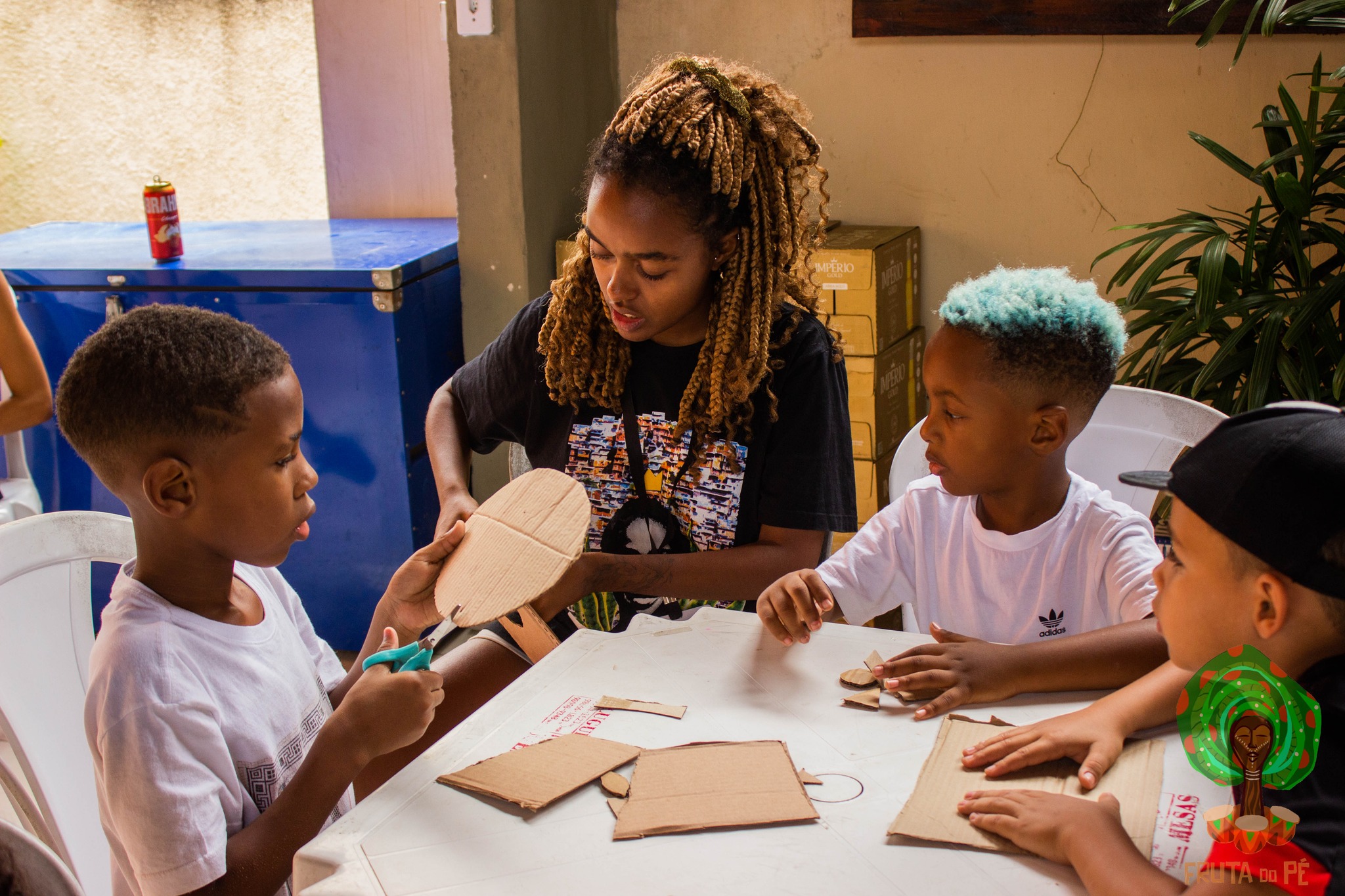
Origin of the Name and Inspiration for the Project
“We chose Fruit from the Tree because of the song Oitava Cor (Eighth Color), by Luiz Carlos da Vila [with Sombra and Sombrinha]. I really liked the comparisons in his songs. And because we have trees here at home. One day my brother Ramon and I were in the backyard picking acerola [a type of cherry]. The song [‘More, much more, than the heat of a bonfire, than the winds that shake the mountain ranges, because between us, love is no joke, can’t you see? It is to have at hand, fruit from the tree in the backyard’] hit me and I thought: Fruit from the Tree.” — Breno Batista
Oitava Cor was recorded by Grupo Fundo de Quintal, another inspiration for the project’s inception.
“What Fundo de Quintal did in [carnival bloco] Cacique de Ramos was an uplifting movement for many Black artists and put samba in the mainstream media at the time. They managed to make a younger crowd find pleasure in ancestral music. So, it was one of the things that inspired me to do it here.” — Breno Batista
A snippet from the song Viver (Living) by Antônio Candeia Filho says: “As long as there’s struggle, there’s samba.” Candeia defended the idea that Black people must find the solution to their problems through their traditions. When asked about one of the biggest difficulties in maintaining the project, Batista replied that it is precisely people’s misunderstanding of what Candeia was saying and the consequent difficulty they have in helping to build projects to revive Black culture.
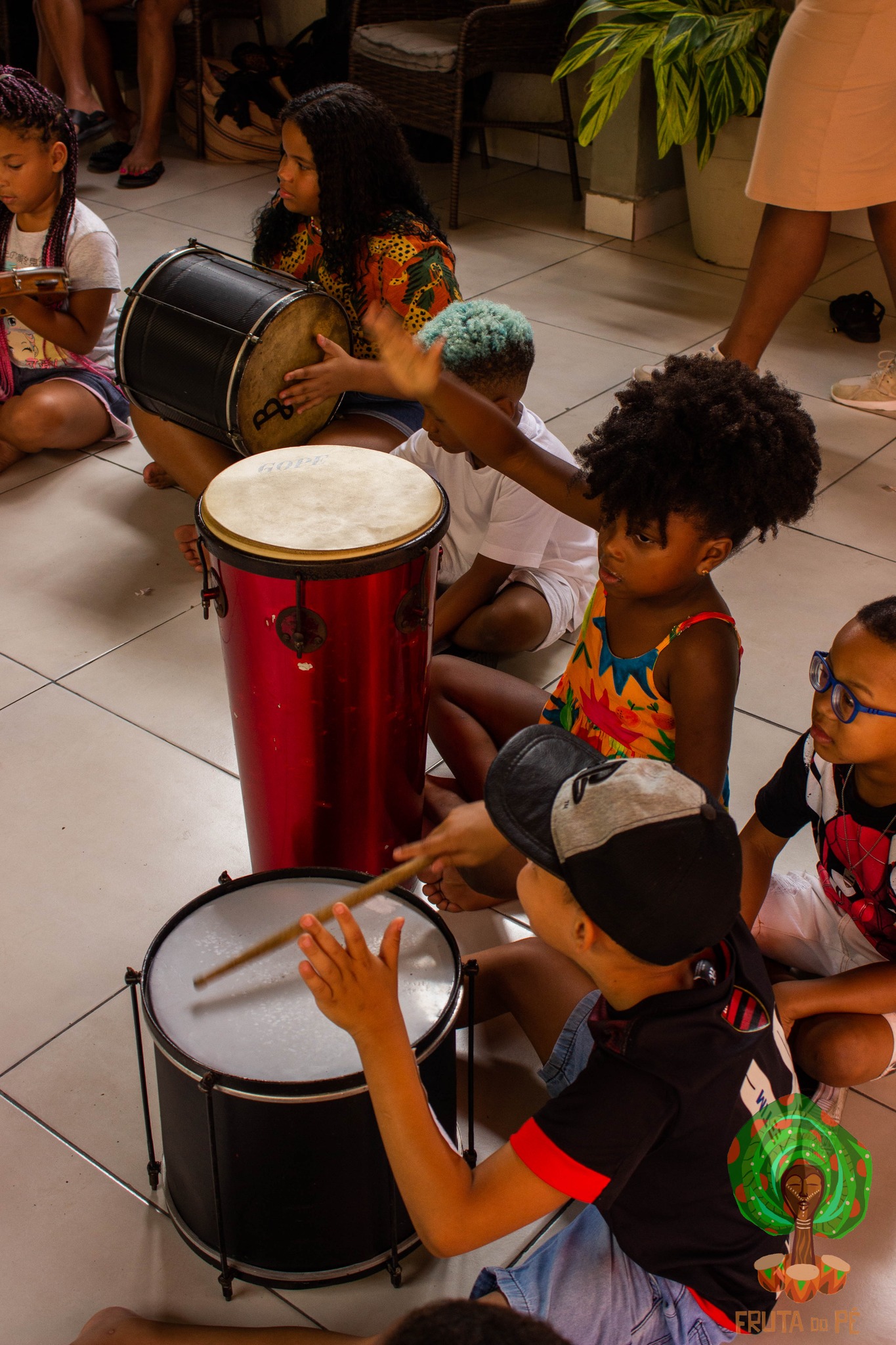
The Fruit from the Tree Team
In contrast to a commercial, individualistic paradigm, a person or community is not built or maintained on its own. Just like planting and harvesting, Fruit from the Tree is a collective process led by five producers: Alexandro Pereira, Carla Batista, Kawan Lopes, Luciano Francisco, and Rodrigo Wellerson.
“I think of Fruit from the Tree as a place of belonging, being a young Black man, of empowering and valuing the Black people of the West Zone. It is always a privilege to help strengthen the Samba Quilombo.” — Kawan Lopes
Fruit from the Tree generates income for over 30 people, including exhibitors, security, bartenders, producers, musicians, caterers, instructors, and others.
The Matriarchs of Samba
It is vital to bring to light the participation of Black women in the creation of samba. Two women essential to the running of Fruit from the Tree are Marly Batista and Carla Batista—Breno Batista’s grandmother and mother. Everything that happens in the project depends on them.
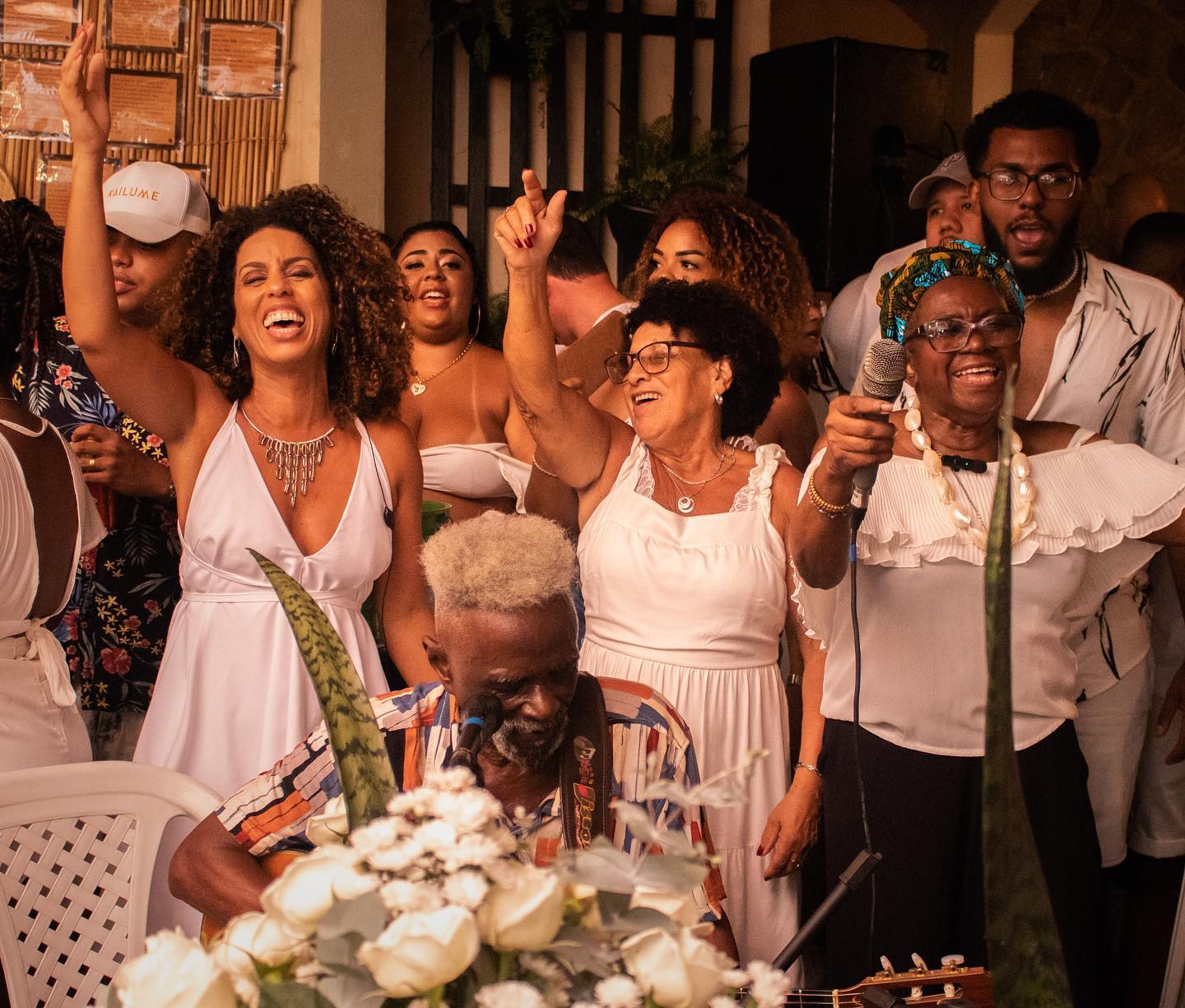
Frequently, Marly Batista, commonly known as Grandma Marly, prepares her famous Angu [typical Brazilian polenta dish] to feed whomever is at the samba in her home. She supports the project wholeheartedly and doesn’t mind the samba drums. She reminds us of the Bahian “Aunts” who brought samba from the Brazilian state of Bahia to Rio de Janeiro and allowed samba musicians, Candomblé practitioners, and capoeira masters to meet in their homes. When someone complains of some pain or discomfort, Grandma Marly uses her ancestral medicinal knowledge with her dependable teas. She says she loves to see the house always full of people.
“I feel so proud and love his project, the people who come to my house, the instructors. Even when I’m no longer here, I want them to continue with the project!” — Grandma Marly
Like the Bahians, Carla Batista is called tia [aunt] out of respect by many people who come to the project. She is part of the production and participates in all the activities, dedicating much of her time and energy to welcome, with a lot of love, the people who are interested in this samba quilombo.
“I feel a mixture of gratitude and responsibility for them. I am very happy for this show of affection. I often find myself giving advice and taking care of them all!” — Aunt Carla
A Pathway towards Afro-Construction
One of the project’s goals is to create a samba school from scratch. It will be a collective project, based on the recognition that samba is capable of restoring the humanity of Black people, generating jobs, politically empowering, educating, forming families, and much more. Members of the Center strengthen Black identity and memory through samba, the largest cultural movement in Brazil.
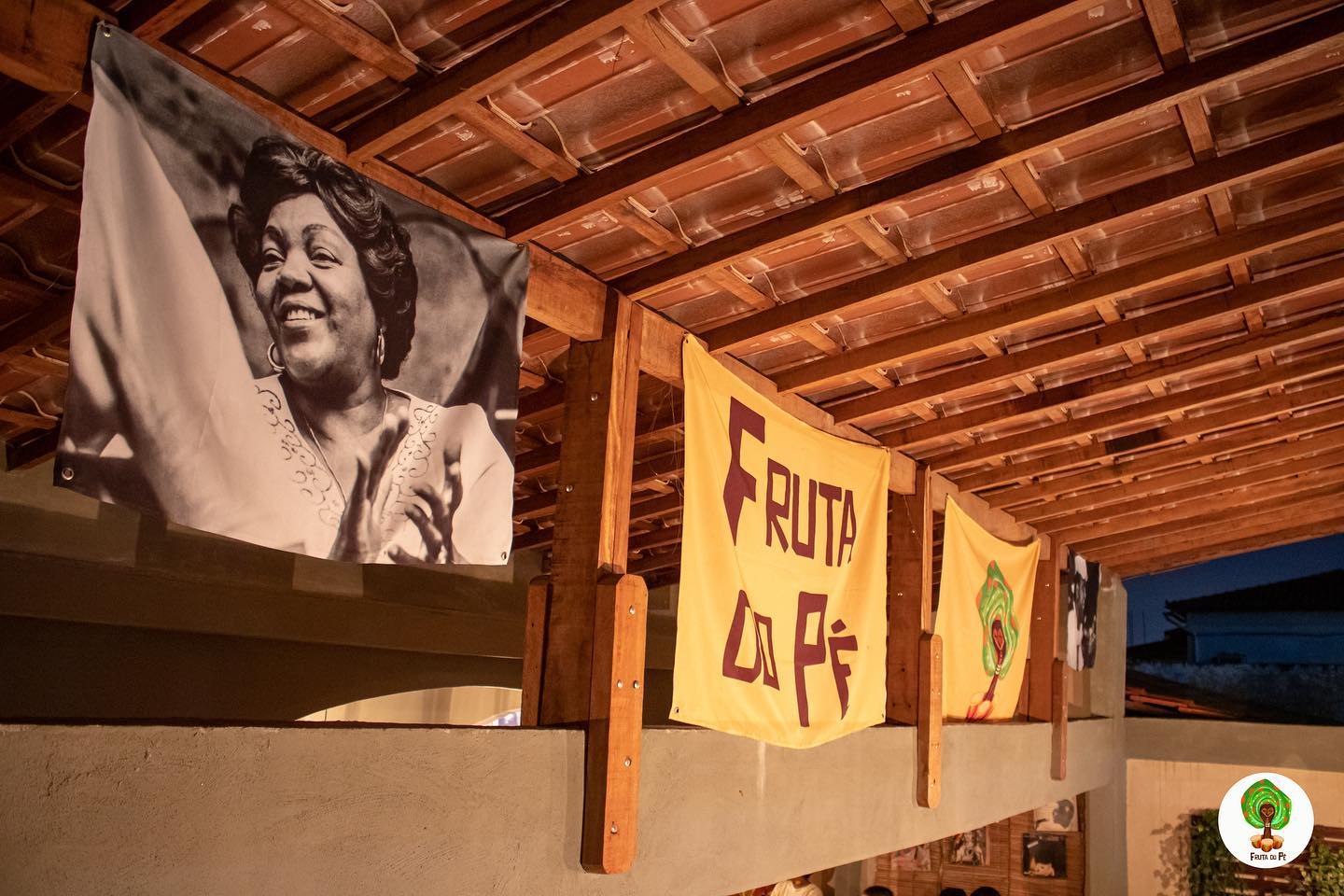
About the author: Larissa Nascimento is a researcher, journalism student and writer. A Black woman, born in the Jardim Nordeste favela, she lives in the East Zone of São Paulo.
About the artist: Raquel Batista is a visual artist and works as a photographer and illustrator. A Black woman, resident of Rio’s West Zone, she is an undergraduate at UFRJ’s School of Fine Arts.
